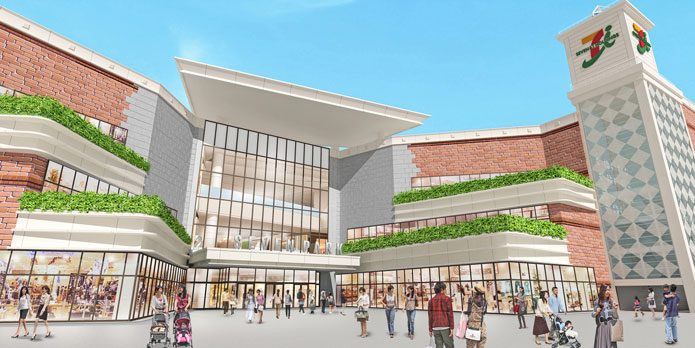
At the end of 2016, Japan had 3,212 shopping centres—an increase of 24% from 2001. But in the view of some people, the number is approaching saturation point.
The Japan Council of Shopping Centers defines a shopping centre as a facility with a total sales area of 1,500m2 or more, and accommodating 10 or more tenants. The Nikkan Gendai dated 4 January reported that 2017 would see a year-on-year decline of 15% in the number of new shopping centres opened, with 46 openings planned for this year. This represents the lowest level of openings in five years, and the second-lowest figure after that achieved in 2012, the year after the Great East Japan Earthquake and Tsunami.
Between 2006 and 2008, more than 80 centres opened, with growth having continued since 2010, despite existing-store sales volumes having begun to decline. But in 2016, 54 new shopping centres opened nationwide, down some 10% from the figure for 2015.
The fall in openings has been particularly noticeable in medium-sized regional cities and towns with populations of less than 150,000. Demographics and other factors affecting the weaker opening figures include the ageing of local residents and the ongoing decline in car ownership.
Nikkan Gendai observed that not only will fewer shopping centres be opening, but that, overall, they will be smaller.
Among the new facilities slated to open this year are the 65,000m2 Sevenpark Ario Kashiwa in Chiba Prefecture (to be operated by Seven & i Holdings Co., Ltd.) in April, and the 60,000m2 Lalaport Shonan Hiratsuka in Kanagawa Prefecture, in October.